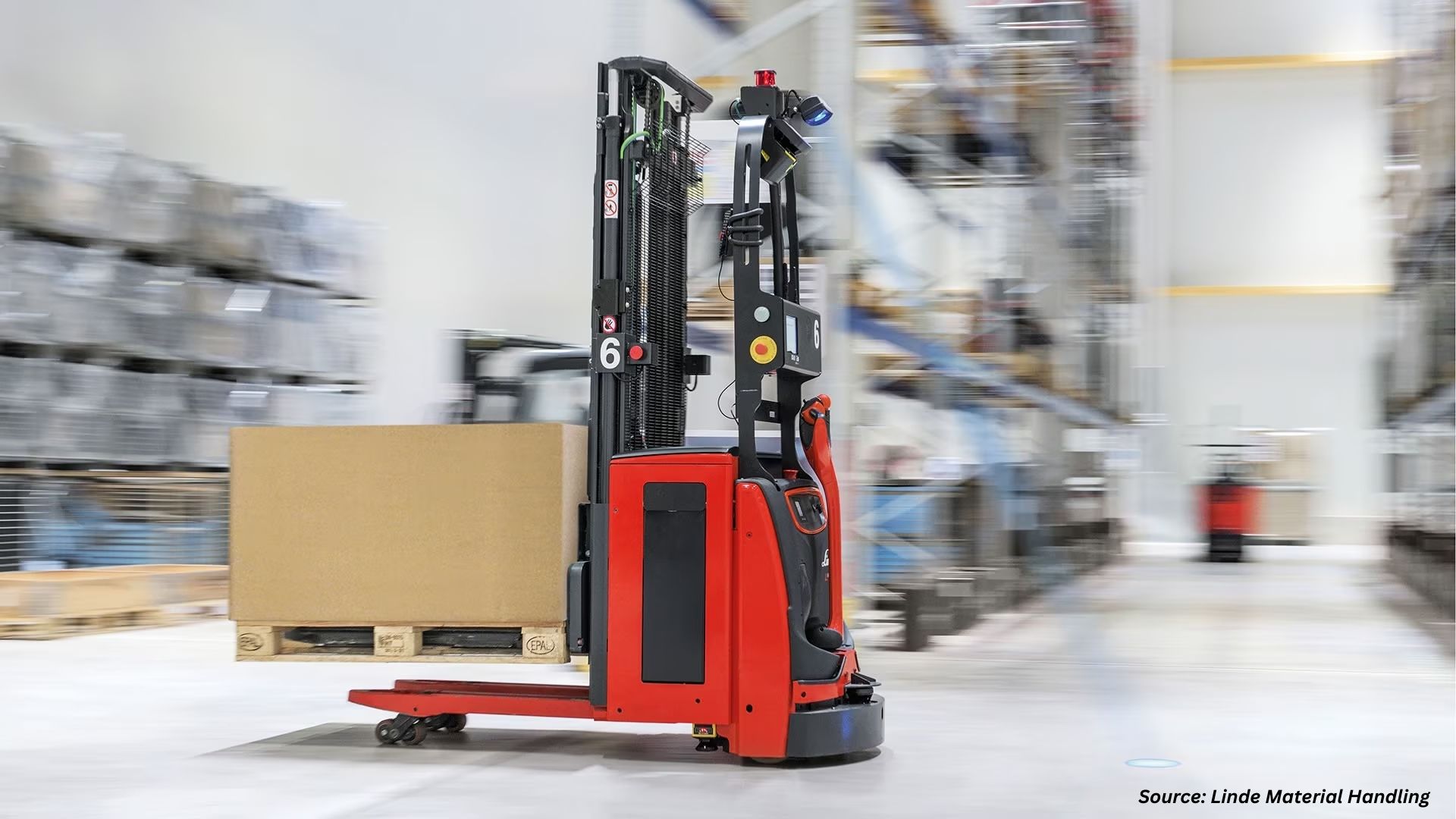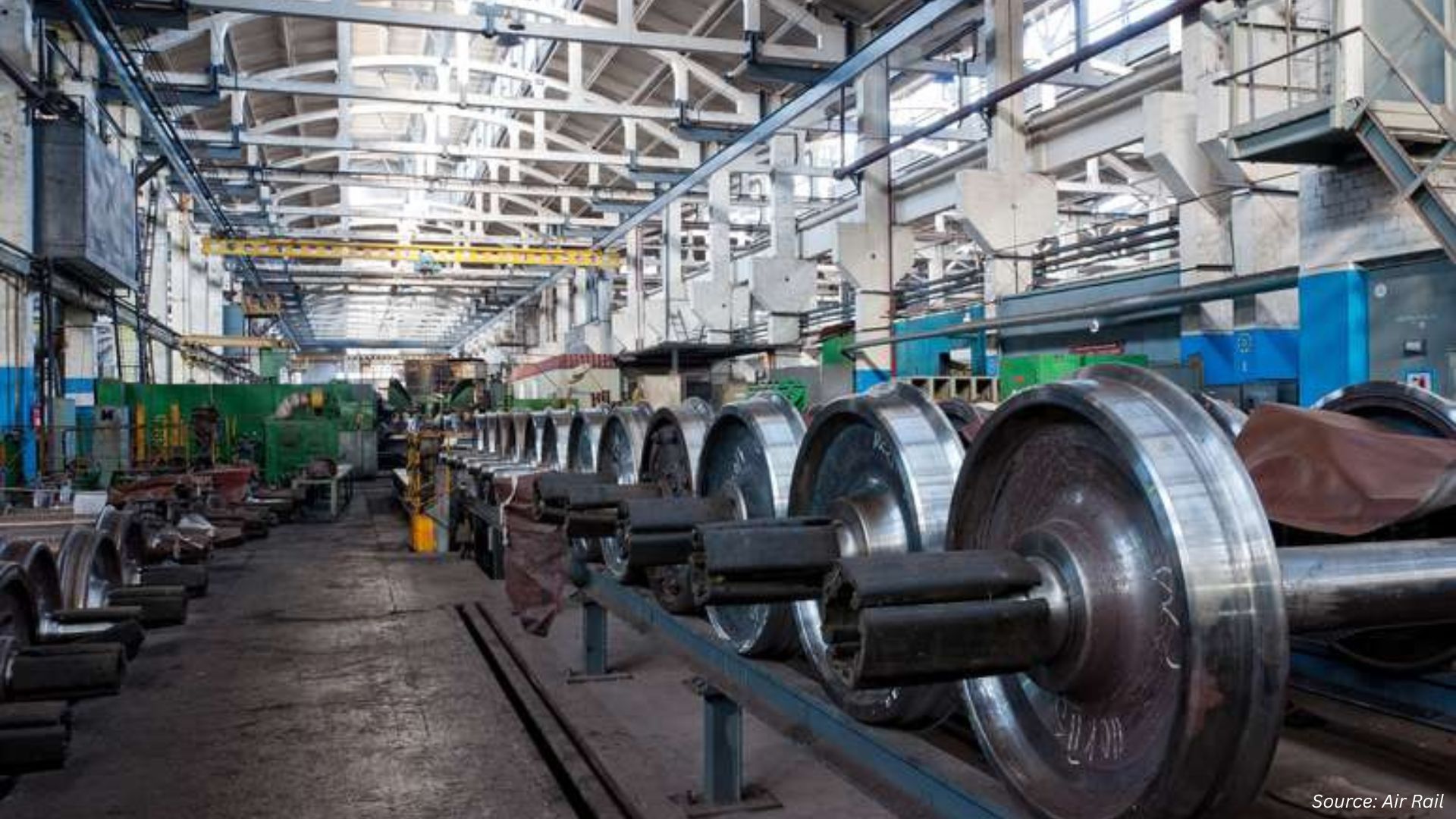AGVs in 2025: Innovations Driving Automation Forward
Published: 2025-09-15

Introduction:
Automated Guided Vehicles (AGVs) represent a paradigm shift in the transportation of materials within industrial settings. These self-driving vehicles have redefined the modern logistics and manufacturing landscape by providing heightened efficiency, adaptability, and safety. The fundamental principle behind AGVs lies in their ability to navigate and transport materials autonomously, eliminating the need for manual intervention in routine material handling tasks. This streamlines operational processes and reduces the risk of human error, enhancing overall safety standards in industrial environments.
As technology continues its relentless march forward, three notable trends have emerged within the AGV domain, each contributing to the evolution of automated material handling. These trends highlight recent technological advancements that hold the promise of further enhancing the capabilities and functionalities of AGVs. By staying abreast of these developments, industries can harness the full potential of AGVs to optimize their logistics and manufacturing workflows, ultimately paving the way for a more sophisticated and automated future.
Machine Learning and Artificial Intelligence Integration:
The integration of machine learning (ML) and artificial intelligence (AI) in AGVs marks a significant advancement in the era of autonomous systems. ML, a subset of AI, involves the development of algorithms that enable AGVs to gain insights and adjust their behaviour based on their experiences and the changing conditions of their environments. This learning capability is instrumental in allowing AGVs to evolve, enhancing their efficiency and responsiveness.
In the context of AGVs, these algorithms analyze vast amount of sensor data, identifying patterns and extracting meaningful insights. This dynamic and continuous analytical process enables AGVs to refine their navigation strategies in real time. Unlike traditional AGVs that follow predetermined paths, the integration of ML empowers AGVs to navigate unpredictable or dynamic industrial landscapes with heightened adaptability.
On the other hand, AI plays a crucial role by endowing AGVs with the capacity to make complex decisions, similar to human intelligence. This mimicking of human-like decision-making processes allows AGVs to assess situations, interpret data, and respond intelligently to the changing environment. The combination of ML and AI ensures that AGVs adhere to pre-programmed routes and intelligently navigate through unscripted scenarios.
This integration allows AGVs to exhibit a learning curve, a continuous refinement of their behaviors based on accumulated experiences. As AGVs encounter diverse scenarios and challenges in their operational environments, the integration of ML and AI enables them to adapt their behavior and optimize navigation paths and decision-making processes. This iterative learning process contributes to the development of AGVs that are not static machines but dynamic entities capable of evolving in response to the complexities of the industrial landscape.
In essence, the integration of ML and AI in AGVs transcends the conventional boundaries of automation. It is ushering in a new era, in which these vehicles not only automate routine tasks but also possess the cognitive capabilities to navigate and adapt in the face of changing and unpredictable conditions. This advancement paves the way for increased operational efficiency and adaptability in the era of automated material handling.
Advanced Sensing Technologies for Enhanced Safety:
The incorporation of advanced sensing technologies in AGVs represents a pivotal development, particularly in enhancing safety within industrial environments. Traditional AGVs relied on basic sensors, but recent advancements have ushered in a substantial upgrade, with LIDAR technology standing out as a cornerstone.
LIDAR, also known as light detection and ranging, is an innovative technology that utilizes laser beams to generate detailed 3D maps of the surroundings. In the context of AGVs, LIDAR plays a crucial role in providing these autonomous vehicles with unprecedented perception and awareness. The laser beams emitted by LIDAR sensors bounce off objects in the AGV's environment, and the system precisely measures the time it takes for the beams to return. By analyzing this data, Lidar creates highly accurate and intricate 3D maps, allowing AGVs to perceive their surroundings with a level of precision previously unattainable. This detailed mapping capability enables AGVs to navigate complex and dynamic environments accurately.
Complementing LIDAR, RADAR technology extends the AGV's range of detection, providing an extended field of view. RADAR systems are adept at long-range detection, enhancing the AGV's situational awareness by identifying objects and potential obstacles at a distance. This extended detection range is crucial in industrial settings where AGVs must navigate expansive spaces and anticipate potential hazards.
Additionally, the integration of computer vision technologies, such as cameras and image processing algorithms, further enriches the sensory capabilities of AGVs. These systems enable AGVs to detect objects and recognize and interpret visual cues in real time. Cameras capture visual data from the environment, and image processing algorithms analyze this data to identify objects, assess distances, and understand the AGV's surroundings. This real-time visual processing enhances the AGV's ability to navigate and react to dynamic elements in its path.
The amalgamation of LIDAR, RADAR, and computer vision technologies equips AGVs with a comprehensive and multi-faceted awareness of their environment. This heightened sensory capability goes beyond basic obstacle detection; it enables AGVs to navigate more precisely, avoid obstacles more effectively, and respond more promptly to unforeseen challenges than before. The intricate mapping provided by LIDAR, combined with the extended detection range of RADAR and the visual interpretation of computer vision, significantly elevates the safety standards in industrial settings where AGVs operate.
Fleet Management Optimization:
Fleet Management Optimization in AGVs is a multifaceted strategy meticulously designed to orchestrate the efficient and synchronized functioning of AGV fleets within industrial complexes. At its core lies the imperative of real-time monitoring, serving as the backbone for operators to gain immediate insights into the status and performance metrics of each AGV within the fleet. This instantaneous oversight allows for proactive decision-making and swift responses to deviations from the operational norm.
Predictive maintenance emerges as a crucial component of fleet management optimization, taking operational efficiency a step further. By harnessing the power of data analytics, this facet anticipates potential issues within AGVs before they manifest. This, in turn, facilitates pre-emptive maintenance interventions. The proactive approach minimizes downtime and contributes significantly to the overall reliability and longevity of AGVs, ensuring they operate at peak performance.
The crux of fleet management optimization lies in the deployment of optimization algorithms. These algorithms dynamically recalibrate AGV routes based on many factors, including real-time traffic patterns and specific operational requirements. This dynamic optimization alleviates the facility's congestion and intricately enhances the overall workflow efficiency. AGVs navigate through the industrial environment with an agility that adapts to evolving conditions, minimizing delays and maximizing the utilization of resources.
Fleet management optimization extends its purview beyond the individual AGV, embracing the holistic coordination of entire fleets. This collaborative approach ensures that AGVs operate in tandem, each contributing to the seamless material flow within the facility. The integration of these elements transforms AGVs from standalone entities into a cohesive and synchronized fleet, enhancing the collective efficiency of material handling operations.
Conclusion:
AGVs are witnessing rapid evolution, driven by innovative technological advancements. The integration of machine learning and artificial intelligence, advanced sensing technologies, and fleet management optimization are three key trends shaping the future of AGVs. AGVs are poised to play an even more critical role in optimizing logistics and manufacturing processes, paving the way for a more efficient and automated industrial future as these technologies continue to mature.
About the Author
 Saurav Sarkar is an accomplished researcher and writer with over three years of experience in conducting thorough research. His passion for exploring various subjects and delving into in-depth analysis has led him to develop a keen understanding of research nuances. He remains committed to staying current with the latest market trends, recognizing their impact on businesses and society. Through his work, Saurav aims to contribute to knowledge dissemination and foster informed discussions on critical issues.
Saurav Sarkar is an accomplished researcher and writer with over three years of experience in conducting thorough research. His passion for exploring various subjects and delving into in-depth analysis has led him to develop a keen understanding of research nuances. He remains committed to staying current with the latest market trends, recognizing their impact on businesses and society. Through his work, Saurav aims to contribute to knowledge dissemination and foster informed discussions on critical issues.
About the Reviewer
 Debashree Dey is a skilled Content Writer, PR Specialist, and Assistant Manager with strong expertise in Digital Marketing. She specializes in crafting visibility strategies and delivering impactful, data-driven campaigns. Passionate about creating engaging, audience-focused content, she helps brands strengthen their online presence. Beyond work, she draws inspiration from creative projects and design pursuits.
Debashree Dey is a skilled Content Writer, PR Specialist, and Assistant Manager with strong expertise in Digital Marketing. She specializes in crafting visibility strategies and delivering impactful, data-driven campaigns. Passionate about creating engaging, audience-focused content, she helps brands strengthen their online presence. Beyond work, she draws inspiration from creative projects and design pursuits.
















Add Comment